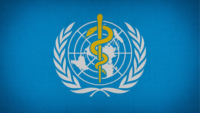Researchers Urge WHO to Include Chagas Disease in its 2025 Estimates of Foodborne Illness Burden

Image credit: Online Marketing via Unsplash
The World Health Organization (WHO) is updating its estimate of the global burden of foodborne illness for 2025, and researchers are calling for the inclusion of Chagas disease, which has not been considered in past estimates.
Chagas disease is caused by the parasite Trypanosoma cruzi, and mainly occurs in Latin America. Consumption of meat or blood from animals infected by T. cruzi, as well as ingestion of other foods like fruit juice contaminated by infected insects or secretions from reservoir hosts, are some of the various routes of transmission for Chagas disease. The clinical outcomes of foodborne Chagas disease can be severe—more so than the outcomes of Chagas disease contracted via other routes of transmission—with close to 100 percent of patients experiencing fever. Other common symptoms include myalgia (muscle aches), headache, leg and/or facial oedema (swelling of tissues), pericardial effusion (buildup of extra fluid in the space around the heart), and abdominal pain. Less common symptoms can include diarrhea, skin rash, dyspnea (shortness of breath), heart palpitations, hepatomegaly (liver enlargement), splenomegaly (spleen enlargement), and hemorrhagic jaundice. Mortality from vector-borne Chagas disease is estimated to be 5–10 percent, whereas foodborne Chagas disease has an 8–40 percent mortality rate.
Growing evidence indicates that foodborne transmission of T. cruzi occurs as commonly as vector-borne infection. The researchers’ calculations suggest a burden of 138,000 Disability Adjusted Life Years (DALY) from foodborne Chagas disease. Burden of disease is usually presented as DALYs, which includes both reduction in life expectancy and diminished years of healthy life.
The WHO Foodborne Disease Burden Epidemiology Reference Group (FERG) did not include T. cruzi in its estimates for 2015 due to a lack of resources, and because some important pathogens with restricted distribution were not included due to the global perspective of the estimates. However, the researchers’ burden estimate for Chagas disease of 138,000 DALYs exceeds that of DALY burdens described in the FERG outputs of 2015 for many pathogens included in the estimate: Bacillus cereus, Brucella, Clostridium botulinum, Clostridium perfringens, Echinococcus granulosus, Fasciola, Giardia, Listeria monocytogenes, Shiga toxin-producing Escherichia coli, Staphylococcus aureus, and Trichinella.
Chagas disease remains a considerable public health issue in endemic countries of Latin America, and the researchers urge that it is not overlooked in the FERG estimates for 2025 simply because of its relatively restricted geographical area of prevalence. Additionally, since Chagas disease is included in the 2025 estimates, the study’s researchers highlight the importance of estimating the proportion of cases of Chagas disease that are foodborne while taking into account the more severe illness associated with the oral route of infection.
Looking for a reprint of this article?
From high-res PDFs to custom plaques, order your copy today!







